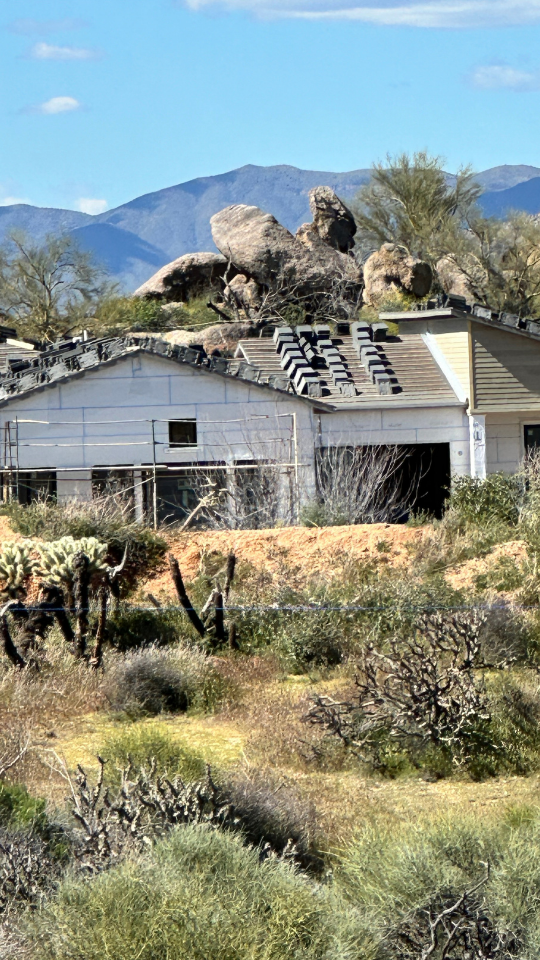
Across Arizona’s fast-growing residential corridors, from North Scottsdale’s luxury enclaves to Mesa’s master-planned communities, buyers are finding an unexpected challenge: not all homes in the same neighborhood are created equal. Despite sharing the same gates, amenities, and zip codes, the quality of materials, workmanship, and even long-term durability can differ widely. Recent housing reports show that Phoenix Metro alone added more than 40,000 new units in the past five years, with construction spread across diverse builders and subcontractors—each with their own standards.
Some masterplanned communities, where homes side by side can carry vastly different reputations for energy efficiency, water system reliability, or finish quality, may surprise buyers. In certain locations, some of the most desirable addresses include subdivisions built by multiple developers under one master vision—yet homeowners report varying experiences with maintenance needs. This contrast has brought renewed attention to due diligence, construction oversight, and post-purchase strategies for safeguarding one’s investment in a home.
At first glance, two homes in a planned community may appear nearly identical—similar floor plans, landscaped streetscapes, shared amenities. The hidden truth, however, is that a property’s long-term value can be eroded by the smallest quality shortcuts. National surveys suggest that 68% of new homeowners encounter some form of construction defect in the first three years, ranging from roofing issues to HVAC inefficiencies. What seems minor at move-in—slightly uneven flooring, cheaper windows, inadequate insulation—often translates into tens of thousands in repair costs later.
For Arizona buyers, where summer temperatures test every material to its limit, even minor flaws in stucco application or HVAC duct sealing can dramatically shorten a home’s lifespan. In some communities, residents have noted differences in builder responsiveness to warranty claims, which directly influences resale desirability. The underlying issue is not just about defects, but about predictability: no homeowner wants to wonder if their neighbor’s identical model will age better simply because a different subcontractor handled the work. The desire, then, is for a pathway to transparency and control.
The variations often come down to builder practices, subcontractor consistency, and materials sourcing. For example, a revocable decision in design—like opting for engineered wood over solid hardwood—can reduce upfront costs but also shorten lifespan under desert conditions. Similarly, homes constructed in the early phases of a master plan may use different roofing systems than later phases due to supply changes.
Some buyers have noted that homes built by national firms sometimes prioritize speed and cost efficiency, while local boutique builders emphasize craftsmanship but may lack economies of scale. Both have advantages and risks: national builders can deliver consistent warranties but may feel less personal accountability, while smaller builders may offer custom touches but limited post-construction support. For homeowners, understanding these variations is not just academic; it’s strategic. The equity you build depends on both curb appeal and the invisible quality beneath the walls.
Local professionals are increasingly vocal about this topic. Locally-based inspectors share that “no two homes—even on the same street—ever carry identical risk profiles. What you don’t see is what usually costs the most.” Similarly, Phoenix real estate agents report advising clients to budget at least $1,500 for third-party inspection reports, even on brand-new properties. The Arizona Registrar of Contractors continues to field thousands of workmanship complaints annually, many stemming from communities where buyers assumed a standard of quality was guaranteed by the development name alone.
Meanwhile, boutique construction firms emphasize a different perspective: that homeowners should focus less on which builder has the most polished sales office and more on asking about subcontractor vetting, post-build quality control, and sustainability certifications. The conversation is shifting from location alone to a broader equation: location plus quality equals resilience.
I recommend homeowners and buyers a few strategies can mitigate risk:
Practical steps like these are not about distrust but about empowerment. In a competitive housing market where resale value hinges on both reputation and reality, proactive diligence can transform uncertainty into confidence.

In the end, the truth is simple: community branding does not equal construction consistency. The beauty of Arizona’s neighborhoods lies in their diversity and innovation, but that same variety creates risk for uninformed buyers. Protecting your investment requires blending optimism with pragmatism—acknowledging that quality can vary, and ensuring you take the steps to tilt the odds in your favor.
This opinion is a general guideline, not legal or construction advice. Every home carries its own unique history and maintenance needs, and homeowners should consult licensed inspectors, contractors, or real estate attorneys before making decisions.
So, as you look at that next house—whether in Queen Creek’s expanding districts or Scottsdale’s gated retreats—ask yourself: what’s behind these walls, and how do I ensure my investment is built to last? And perhaps more importantly: how can communities and builders better align to deliver consistency and trust for every resident?
 Arizona Cardinals’ $136 Million “Headquarters Alley” Project: How a 217-Acre Deal Will Redefine North Phoenix by 2028
Arizona Cardinals’ $136 Million “Headquarters Alley” Project: How a 217-Acre Deal Will Redefine North Phoenix by 2028 Exploring Arizona’s Unique Land Ownership Laws: What Every Future Homeowner, Investor, And Relocating Professional Needs To Know
Exploring Arizona’s Unique Land Ownership Laws: What Every Future Homeowner, Investor, And Relocating Professional Needs To Know

 Public Safety as an Asset Class: The New Scottsdale AdvantageIn today’s Smart City economy, safety isn’t simply about peace of mind—it’s becoming a measurable, marketable asset class. Scottsdale is proving that public safety can be engineered into the fabric of
Public Safety as an Asset Class: The New Scottsdale AdvantageIn today’s Smart City economy, safety isn’t simply about peace of mind—it’s becoming a measurable, marketable asset class. Scottsdale is proving that public safety can be engineered into the fabric ofNice to meet you! I’m Katrina Golikova, and I believe you landed here for a reason.
I help my clients to reach their real estate goals through thriving creative solutions and love to share my knowledge.

